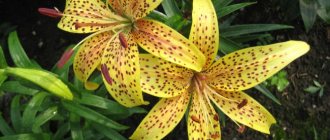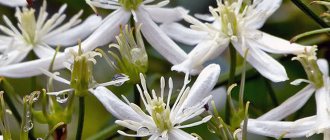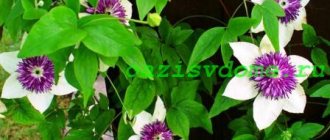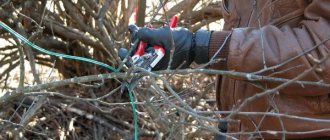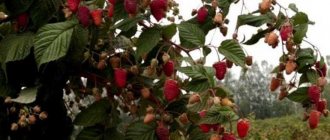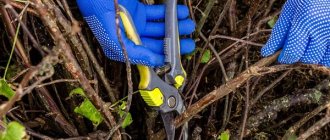In autumn, the panicle hydrangea bush reminds less and less of the recent lush flowering. Leaves and inflorescences dry out, branches become woody. It's time to prune and feed the plant, and also decide whether to provide shelter for the winter for the paniculata hydrangea.
Experienced gardeners begin preparing paniculate hydrangea for winter already in the summer: they strengthen the plant’s immunity by fertilizing with phosphorus and potassium, protect it from pests, and, closer to autumn, gradually reduce watering to speed up the lignification of shoots. We hope that you also paid attention to the hydrangea bushes. If you missed something, don’t worry. We will show you how to prepare paniculate hydrangea for winter. But first, let's figure out how to plant this plant in the fall.
When and how to prune hydrangeas in the fall
In general, the lower leaves from the bushes should be removed by the first days of August. This is done so that the trunk of the bush becomes as woody as possible.
The type of pruning depends on the variety of hydrangea. For example, tree and panicle hydrangeas can be pruned short.
But for large-leaved specimens, the tops are only slightly shortened. Sanitary pruning is also carried out.
Sanitary pruning involves the removal of dried inflorescences, damaged inflorescences, diseased, old and broken shoots. In the tree-like variety, healthy branches are cut into 4 buds.
During radical rejuvenation, “stumps” 20 cm high are left.
Pruning paniculate hydrangea involves removing diseased and weak branches and shoots that thicken the crown.
IMPORTANT! Pay special attention to pruning bush hydrangeas.
Pruning paniculata and tree hydrangea: formative and sanitary
There is a lot of controversy about when it is correct to prune hydrangeas: in spring or autumn. We recommend paying attention to this process in both autumn and spring. If you leave the bush for the winter, cutting off only the inflorescences, as many advise, the branches may break off under the weight of the snow cover, because when the process of sap flow in the shoots stops, they become fragile.
Pruning hydrangeas in the fall is done at a time when the leaves are already turning yellow and the inflorescences are turning brown. Usually in the Moscow region this occurs in October. The same pruning method is used for both panicle and tree hydrangeas. We cut off each of the current year's shoots above the third or fourth bud, forming a hemispherical shape of the bush. We remove dry and thin weak shoots completely. With the onset of spring (before sap flow begins), inspect the plant. If some branches have dried out or broken off, you should trim a little more to the nearest bud.
Treatment of hydrangea in autumn
Hydrangea is not one of the most disease-prone garden crops. However, it should also be treated in the fall as part of sanitary measures in preparation for winter.
Spray hydrangea on bare branches. They also cultivate the soil under each bush.
Among the drugs against fungal, bacterial and viral infections, Bordeaux mixture (1%) or Abiga-Pik (40 ml per bucket of water) is used.
Aktara helps well against pests.
Feeding hydrangeas in autumn
The moment of feeding perennials before winter is important. To strengthen the root system, as well as the ripening of shoots, potassium and phosphorus fertilizers are used.
Fertilizers are applied before pruning. It is recommended to use granular fertilizer. It is scattered in a circle around the trunk and then embedded in the soil. If the autumn is rainy, the fertilizer decomposes from the rain. If the weather is dry, then it is worth watering the bushes.
The consumption rate of the preparations is 15 g of potassium monophosphate and 15 g of superphosphate per 1 sq. meter of trunk circle, or 40 grams of each drug per bush.
IMPORTANT! In the fall, it is highly recommended not to apply organic fertilizers. It is also undesirable to use fertilizers high in boron, magnesium and iron.
It is permissible to use only wood ash from organic matter (2 cups for each bush).
A special feature of hydrangea is that you can change the color of the inflorescences by applying different fertilizers. Including in the fall.
For example, by mulching the surface with pine needles and acidic peat, you can give the inflorescences a blue and blue tint.
Rules for autumn care of hydrangea and preparation for winter
Inexperienced gardeners often encounter the fact that hydrangea dies after wintering or takes a long time to recover from the cold. To return the bush to bright, lush flowering, it needs to be properly cared for not only in spring and summer, but also in autumn. At this time of year, the plant gains strength before the next flowering and before the upcoming cold weather. Winter is a real test for hydrangea, since this crop is heat-loving. It began to be grown in Asian countries: Japan and China, and our climate is much harsher and more changeable than in Asia.
Autumn care of plantings consists of:
- pre-winter watering, loosening the soil;
- proper pruning of bushes;
- timely feeding;
- shelter for the winter.
Each of these stages is important and requires compliance; they cannot be neglected. Otherwise, the hydrangea is doomed to death: the shoots will freeze over the winter, or the plant simply will not have the strength to restore a lush crown, and it will get sick.
On a note!
Hydrangea comes in almost every color of the rainbow, from bright, saturated tones to calm shades. Landscape designers often use culture when decorating the surrounding area and creating hedges.
How to care for hydrangea in the garden immediately after flowering
With the wilting of the last peduncle, they begin to prepare the plant for the upcoming winter. First of all, the faded inflorescences are cut off approximately to the middle. There is no need to cut the peduncle right to the root, as this can damage the stem. If you do not trim the flowers, the hydrangea continues to devote energy to maintaining them.
Then, after pruning, the flowerbed is sanitized: fallen leaves and branches are removed. Fungal spores, viruses, and insect larvae often multiply and successfully overwinter in garden waste, so the soil must be kept clean to prevent infection. The soil is loosened to saturate it with oxygen necessary for the development of the root system.
How to feed hydrangea before winter
Autumn feeding of hydrangeas is carried out regularly in order to feed the root system for future flowering and to strengthen the immune system. The paniculate variety requires potassium-phosphorus fertilizers. Potassium protects the plant from frost and strengthens the roots. The microelement helps reduce freezing temperatures, which causes moisture to remain in the soil longer.
Phosphorus is another essential element for normal plant development. It increases resistance to pests and diseases, strengthens immune capacity. Both elements stimulate the formation of buds, which is why active flowering begins during the season. For autumn feeding, potassium sulfate and superphosphate are added to the soil. Dissolve 1 tbsp in a bucket of warm water. Each substance is watered under the stem. The consumption rate is 5-7 liters per bush.
Hydrangea can be fed in the fall with organic fertilizers. Spread rotted manure, peat or compost on pre-loosened soil. The mulch layer performs 2 functions at the same time: it nourishes the soil with useful microelements and protects the roots from freezing. There is no need to add mulch to the soil; organic fertilizers will be completely absorbed into the soil in the spring.
Not all fertilizers can be used for autumn crop care. You cannot add nitrogen-containing substances to the soil: saltpeter, nitrophoska, fresh manure and chicken. Nitrogen provokes the growth of green mass: young shoots and new buds are formed. As soon as frost sets in, the new greenery will quickly die, and this will only harm the bushes.
To maintain acidity, boric or citric acid is added to the soil. Dilute 1 tbsp. substances in 10 liters and water at the root. This should only be done if the soil in the area has an alkaline or neutral reaction. If the soil, on the contrary, is excessively acidic, then ash-based fertilizers will help neutralize the excess acid. Fill half a glass with water (10 l) and water the ground at the rate of 1 bucket per 1 m2.
On a note!
The color of hydrangea is affected by the acidity of the soil. Alkaline soil produces pink and red flowers, while acidic soil produces blue and purple flowers.
Find out how to feed hydrangea in the spring for lush flowering and active growth.
Do I need to water and how?
Hydrangea is classified as a moisture-loving plant. The flower accumulates water reserves in the stems. In autumn, you need to be careful with watering so as not to over-moisten the soil. If there is excess moisture, cracks appear on the stem, branches become brittle, and roots quickly rot. On the other hand, if you do not water the hydrangea at all after flowering, the stem will gradually dry out and the crop will not survive until winter.
If it rains regularly in the fall in the region, then there is no need to additionally water the plantings. Precipitation will saturate the soil with moisture. If autumn is dry and the soil has dried to a depth of 6-7 cm, it is necessary to water the flower. The consumption rate for one adult bush is 5 liters. Before watering the plants, monitor the thermometer readings. As soon as it starts to get colder, and at night the temperature is close to zero, the volume of water needs to be reduced. If the temperature at night drops below zero, then stop watering immediately, otherwise it is easy to freeze the roots.
With the onset of autumn, experienced flower growers advise building a special device for the hydrangea - a frame. This will save the plant from waterlogging of the soil, because in some regions there is a lot of rainfall in October and September, and the frame will protect the stems and branches from a windy gust. Supports are installed along the perimeter of the tree trunk circle, and any moisture-resistant material is pulled over them. Small grooves are dug around the bush to drain water.
If, on the contrary, autumn in the region is warm and dry, then the crop is watered with cool, settled water. For those gardeners who cannot constantly be in the country and control dryness, there is one effective way to preserve moisture in the ground for a long time. To do this you need to mix tbsp. superphosphate and monophosphate in 10 liters of water. Pour the solution under the bush. This feeding is carried out only once and in early autumn.
Autumn pruning of hydrangea
Autumn is the most suitable time to prune adult and young bushes. Some gardeners carry out this procedure in the spring, which is very risky: with warming, the movement of sap in the stems becomes more active, and the plant can be injured. In autumn, the movement of sap, on the contrary, slows down, which means there will be no harm to the flower.
However, you cannot thoughtlessly prune the plant; not all species require the procedure. Whether to prune or not depends on the flowering characteristics of different varieties. For example, there are species in which new buds form on last year's shoots, and if they are cut off, there will be no flowering next year. Pruning cannot be neglected. The bush looks unkempt, spends a lot of effort maintaining diseased and dry branches, and also increases the likelihood of infection with viruses and fungi.
There are 2 types of pruning:
- cosmetic (performed once a year);
- thorough (carried out every 2-3 years).
Pruning is carried out as follows:
- use pruning shears to cut off old dry branches, diseased and damaged shoots, and branches located at the bottom of the stem;
- make room for the growth of new young shoots, control the density of the bush;
- The cut sites are burned with hydrogen peroxide or treated with potassium permanganate.
It is necessary to thin out an adult shrub every year, otherwise the young shoots develop uncontrollably and an unsightly thickening appears. Young shrubs up to 3 years old are pruned to a minimum; only 2-3 strong branches can be cut at a time.
Attention!
All garden pruning work is carried out with clean, treated tools. Secateurs or a knife are soaked in a weak solution of potassium permanganate to prevent bacteria from entering the cut.
When to stop watering hydrangeas before winter
Another important issue that needs to be addressed when preparing hydrangeas for winter is the frequency and abundance of watering.
Starting in September, the frequency of watering is reduced. And in rainy autumn they stop altogether. Moreover, if rainy weather persists for a long time, then the bushes are covered with film to prevent them from being flooded.
Over-watering in the fall is completely unnecessary.
If the autumn turns out to be dry, then watering must be completed by the end of the second decade of October, that is, by the time the leaves have completely fallen off the plant.
Planting paniculate hydrangea in open ground in autumn
In September, paniculate hydrangea seedlings can be planted in open ground. Large-leaved does not withstand such tests, so it is not worth the risk. If you live in a region with warm autumns, you can postpone planting to a later date. But remember that young plants must be in the ground before the first frost.
Seedlings with a well-developed root system are suitable for autumn planting. This is the key to excellent survival rate, plus a strong plant is not attacked by pests that are actively preparing for winter. If everything is done correctly, next season the bush will delight you with gorgeous flowering. The only condition is that it will have to be covered for the winter. How to do this - read in our materials. In the meantime, let's move on to the intricacies of planting.
Important! Do all work with the bush with gloves! Even a seedling can damage the skin with toxic substances released.
Hydrangea is a large bush, take this fact into account when choosing a place to plant. The plant loves the sun and does not tolerate drafts. To protect it from the winds, it can be placed against a fence or wall of a building, but there must be enough space for further development. You should not plant hydrangea near trees or other bushes. This will lead to constant competition for water, light and nutrients. And it is not yet known who will win. Therefore, hydrangeas are planted separately from other inhabitants of the garden plot. It can become the head of an alpine slide and perfectly complement a lawn or lawn. By the way, the only acceptable proximity is with lilacs and spirea, but in the case when the bushes are planted at the same time and they develop in parallel.
When to cover hydrangea for the winter in different regions
Depending on the climatic characteristics of the growing region. The warmer it is, the later you can start covering the bush.
- In the Middle Zone, construction of insulating structures begins at the end of October.
- In the Leningrad region and neighboring regions, preparations for winter are completed in mid-October.
- In the Urals and Siberia, all care activities must be completed by the end of September.
- In the southern regions, hydrangea does not need to be covered. But care must include pruning.
As for the specific date of the procedure, they are guided by the condition of the bush (fall of leaves) or the weather (temperature around zero).
Should I cover paniculate hydrangea for the winter?
The main character of our article belongs to frost-resistant plants. Even very significant disadvantages do not cause catastrophic harm to it. In most cases, hydrangea comes to life in the spring and then blooms as if nothing had happened. Therefore, careful mulching is enough for the bush; it is better to choose peat. However, keep in mind that all of the above applies to mature plants, healthy and strong ones.
When it comes to seedlings, shelter is indispensable. Even if very low temperatures do not occur in winter, sudden changes in temperature, lack of snow cover, and strong winds are dangerous, which is typical for the Moscow region and the middle zone.
Important! Mulching is usually carried out with peat, but the material can be replaced with manure (necessarily well-rotted). We recommend avoiding the use of dry leaves - this is a direct path to the spread of mold, rot, diseases and pests.
If there are young transplanted bushes on your site, the end of autumn is the time to think about shelter. You shouldn’t do it too early, as the plant may grow stubborn. Therefore, wait until it gets colder, even the first frost, and then start working.
How to cover hydrangea before winter
For the winter, hydrangea is covered. This is especially important for residents of the coldest regions of our country.
There are several ways to carry out this procedure correctly. Let's take a closer look at them.
Leaves
Hydrangea shoots are carefully bent to the ground and fixed.
Next, they are covered with leaves and a thin layer of non-woven material is placed on top.
In winter you will need to add snow on top.
Coniferous spruce branches
The insulation algorithm is as follows:
- We lay spruce branches under the bush.
- We tilt the shoots and place them on the spruce branches. Don't forget to anchor it near the ground.
- Place another layer of spruce branches on top.
- We cover everything with non-woven material and put weights on top.
Air-dry shelter
First of all, we need to prepare both the hydrangea and the material for constructing the covering structure.
First, cover the bush with soil or peat. Next, bend the shoots to the ground and strengthen them.
Next, you need to install a frame around the bush. Non-woven material is stretched over the frame. Don't forget to make ventilation holes. They must be closed for the winter, but released again in the spring.
Cover the frame with fallen snow.
Features of hydrangea shelter depending on the region
Now let's talk about some of the nuances of preparing hydrangeas for winter in different regions.
In Central Russia, it is necessary to cover large-leaved and oak-leaved varieties of the crop. It is enough to lightly mulch the ground cover.
In the south, hydrangeas may not need to be covered at all. You can only mulch the plants a little if you are afraid of a cold winter.
In Siberia and the Urals, it is advisable to cover all varieties of hydrangea. These regions have very harsh winters, so it is better to be on the safe side.
Covering old hydrangeas in autumn
Different types of hydrangeas require different approaches. We have collected information on all varieties in one table for ease of perception.
Table. Sheltering hydrangeas for the winter depending on the variety
| Variety | Features of preparation for winter |
| Tree-like | Does not require shelter. Tolerates frosts well |
| Paniculata | Requires insulation only in the coldest regions. Tolerates frosty winters well |
| large-leaved | Requires careful insulation as it freezes easily |
| Ground cover | It is enough to lightly mulch with sawdust, peat or fallen leaves from trees. |
| Oakleaf | Needs to be well insulated for winter |
| Chereshkova | Does not require insulation |
ON A NOTE. Do not forget to hill up the rhizomes of the shrub. To do this, use dry soil, peat and leaves.
Typically, hydrangea branches are bent to the ground. But this is not always possible. If the shoots are too woody, they are pulled into a vertical cylinder. A frame is made around it, inside which foliage is poured. The top is covered with spruce branches and wrapped in agrofibre.
Transplanting and planting hydrangeas in autumn
The operation can be carried out with all plants except garden hydrangea (large-leaved). This species is heat-loving and capricious, does not tolerate winter cold well and does not have time to take root before frost.
- Large-leaved hydrangea is planted only in spring.
- Panicle and tree varieties take root well when planted 1-1.5 months before frosty weather sets in.
The site for placing the plants is chosen in the lacy shade of trees, on the eastern slope of a hill or near a building so that the hydrangea is in the shade during the day. The foliage and flowers of the bush quickly fade in the bright midday sun and lose their attractiveness. The bush will have to be watered more often.
The soil must be fertile, moisture-absorbing (but without stagnant water!) and loose. Hydrangea is a plant in acidic soils; neutral and alkaline soils are acidified by adding peat and compost from spruce needles. Compost from spruce or pine needles is prepared as follows: store the needles in a shady place, compact them tightly and water them with water. Compost is ready for use 2 years after laying. A hole for planting a young hydrangea seedling is prepared measuring 50 by 50 cm and about 40 cm deep. It is filled with the mixture:
- turf soil 2 parts;
- humus 2 parts;
- coarse sand 1 part;
- peat 1 part.
Fertilizers are added to each bucket of this mixture: 60 g of superphosphate, 20 g of potassium sulfur.
The hydrangea seedling is placed in the center of the hole and covered with soil so that the root collar is on the surface of the ground. After planting, the bush is watered abundantly and mulched with peat, pine needles or bark.
If an adult hydrangea plant is replanted, it is dug out along with a lump of earth, being careful not to damage the roots. A hole for planting is dug such that the entire earthen ball fits in it and there is still a free space of 2-4 cm left to the walls of the hole. This space is filled with the above-mentioned nutrient mixture. It is immersed in the planting hole without burying it in the soil.
The distance between plants depends on the size of the adult bush. The low paniculate variety is placed at a distance of 70-90 cm, the tree-like variety is planted no closer than 2-2.5 m to other plants.
Common mistakes
- Hydrangea is not pruned. All varieties of hydrangea require pruning to one degree or another. This is an important part of autumn shrub care.
- Hydrangea does not hide. In the conditions of the Middle Zone and especially the Urals and Siberia, the crop must be insulated for the winter from frost.
- The plant remains without water in the fall. During half of autumn, hydrangea needs regular watering. You cannot leave the plant without water immediately after flowering.
- Incorrect feeding. Autumn care is feeding with potassium and phosphorus compounds. Nitrogen and most organic matter cannot be used.
- There is no treatment for diseases. Hydrangea and the soil under it must be sprayed with fungicides.
- Incorrect trimming. The degree of pruning depends on the type of shrub. Some require only careful pinching of the crown and sanitary thinning.
- There are no ventilation holes in the covering structure. In any case, it is necessary to ensure access of air to the shoots of the plant so that they do not begin to rot.
Answers to frequently asked questions
Do I need to water hydrangeas in the fall?
Yes, this is an important element of care. But this must be done very moderately and only until mid-October. Then the bush, on the contrary, is protected from waterlogging.
What care does a flower need?
Pruning, mulching, hilling, treating against diseases and covering are the minimum when preparing this perennial for winter.
Is it possible to replant a bush before winter?
Yes. And also propagate and rejuvenate. The fact is that the seedlings will take root over the winter and begin to bloom in the new season.
In addition, pests and pathogenic microorganisms that can harm the young plant go into hibernation during the winter.
What is the best treatment for diseases?
The most effective will be the modern drug "Abiga-PIK".
How to insulate a perennial?
Use leaf litter, spruce branches, non-woven material. Low-growing bushes can be completely covered with sawdust.
You can learn more about pruning these types of hydrangeas from the video:
This pruning of the bush provokes the formation of side shoots, adding lushness to the crown and increasing the number of inflorescences.
Returning to the topic of autumn work, you should pay attention to cleaning the garden from fallen leaves. Sometimes they are used as mulching material, but this can only be done if you are one hundred percent sure that not a single plant on the site was sick during the season. Many fungal diseases overwinter well on fallen leaves, continuing to attack plants in the spring. You can read more in the publication: “Removing leaves in autumn: is it necessary?” Pine or larch bark is perfect for mulching hydrangea: it looks attractive, retains moisture well and helps acidify the soil, which is very important for this shrub.
In this article, we looked at all the necessary actions that need to be taken in the fall to care for hydrangea. Even an inexperienced gardener can cope with growing this shrub, which is why its popularity does not fade from year to year. With each new season, more and more new varieties of hydrangea appear in the assortment of our garden center, charming with their beauty and attracting with affordable prices. Such a shrub will become the highlight of any mixborder, and even the most boring landscape will win your attention if you add hydrangea to it.


